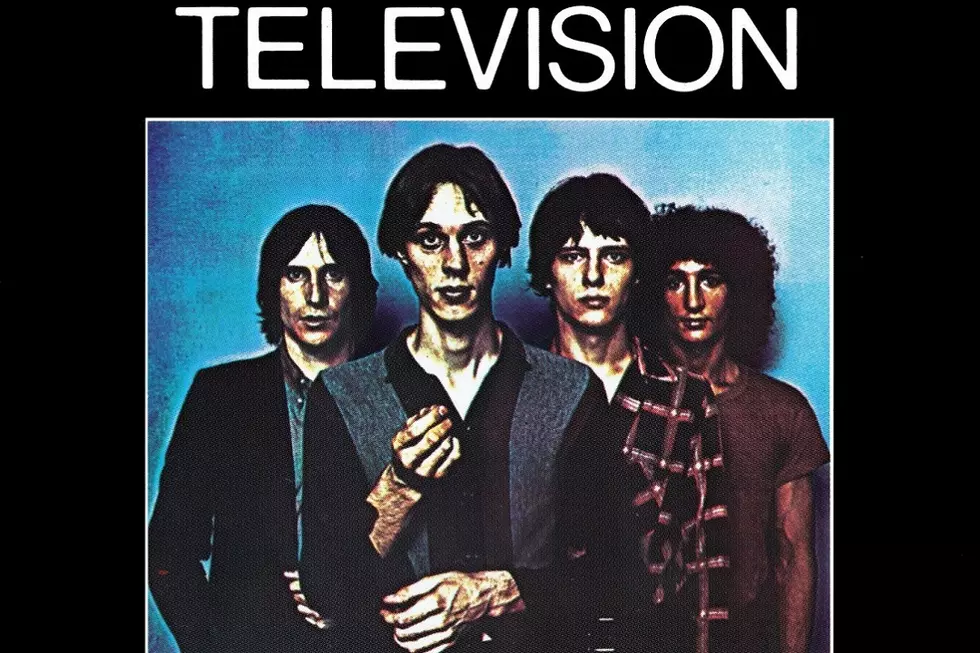
How is an Album Like a Bottle of Wine?
Near the end of AdWeek's recent evaluation of the state of digital music, the ad industry mag turned to Maynard James Keenan of Tool and a Perfect Circle for some artist perspective. Keenan said he regrets ever putting his music on streaming services due to the measly payouts. Thankfully, Keenan (who also owns a vineyard) doesn't depend solely on his music to get by. "The wine business is doing great," he said. "You can't download my wine."
But how much of Keenan's music are listeners really getting when they download it? I say this with true conviction: A great vinyl LP set is not just for fetishists. Sure, there's a cult around 180 gram vinyl and colored vinyl and transparent vinyl, and I'm not a part of that world. I won't buy a record just because it's pink. For me, a lot of those special packaging things feel like gimmicks -- obvious attempts to make the record worth more without adding any real value. It's a play for the fetishist and it doesn't give a true buying incentive (this is capitalism, after all!) to your everyday music lover.
To me, the value of an actual physical record comes down to the artwork. Often, album covers are a collaboration between the band and a visual artist -- an interpretation of the music and a guide to the sounds contained in the grooves. The cover is the first contact you have with a new record; a good album cover will not only persuade you to pick it up, it'll enhance the music and help create its own little world. Imagine if Abbey Road and Rubber Soul switched covers or if all Led Zeppelin's sonic firebombing hadn't been foreshadowed by that image of the burning Hindenburg or if the photo on the Blonde on Blonde cover had been in focus. Would it have changed the way you feel about the music? Even a little bit? (Bad album covers, meanwhile, are doomed to hang out sad and lonely in the dollar bin forever.)
Ironically, album covers are hitting a high point right now just as fewer listeners are taking the opportunity to hold them in their hands. Bands like Erase Errata and THEESatisfaction are using artwork for their covers that could easily be hung in a gallery. Glen Hansard's new EP of Jason Molina covers unearths a cripplingly beautiful piece by Molina himself with turns bright and desolate like Molina's music. Radical Dads went high-concept for the cover for Universal Coolers by enlisting Brooklyn painting machine Steve Keene and it's more of a statement than a cover design. And, for my money, Stacey Rozich's cover for Father John Misty's I Love You, Honeybear (with its warped storybook interpretations of FJM's songs) will be remembered as one of the greatest record covers ever.
What do all these record covers have in common? If you buy the records on iTunes or stream them on Spotify, you'll never see a version of them bigger than your literal thumbnail. This was made real to me recently when I finally picked up a vinyl copy of Mount Eerie's Sauna. Oh, what I had missed by never sitting down with this beautiful record sleeve in my lap. Contained within its simple cover and gatefold are Phil Elverum's hand-written lyrics, photos, hand-drawn comics and landscapes all presumably by Elverum himself. The record (which is still probably my favorite of the year so far) is partly about solitude and craftsmanship which is bolstered by an album cover that does its own part in gathering Elverum's errant thoughts and movements toward zen. It's of a piece with the album, and a piece of it, inseparable.
Buying a vinyl record is not just about supporting the band or adding a piece of ephemera to your collection -- it's about the full experience of the record. Streaming is convenient and cheap (or free), but it only gives you part of the package. In that way, an album really is like Maynard James Keenan's wine -- it's a craft, a good or something you need to consume physically in order to really appreciate -- something that, at least as a whole piece of art, you can't download.
More From Diffuser.fm









